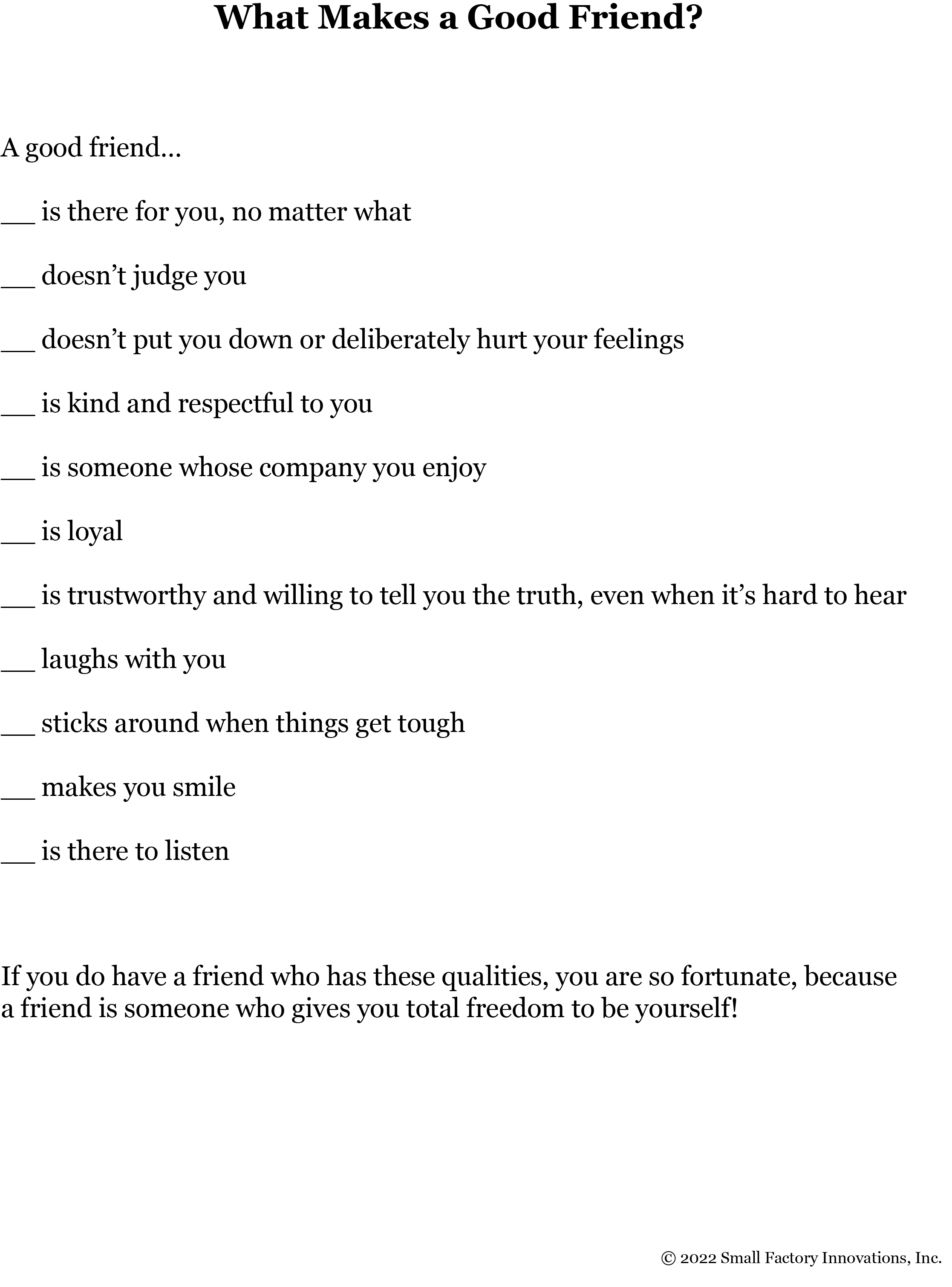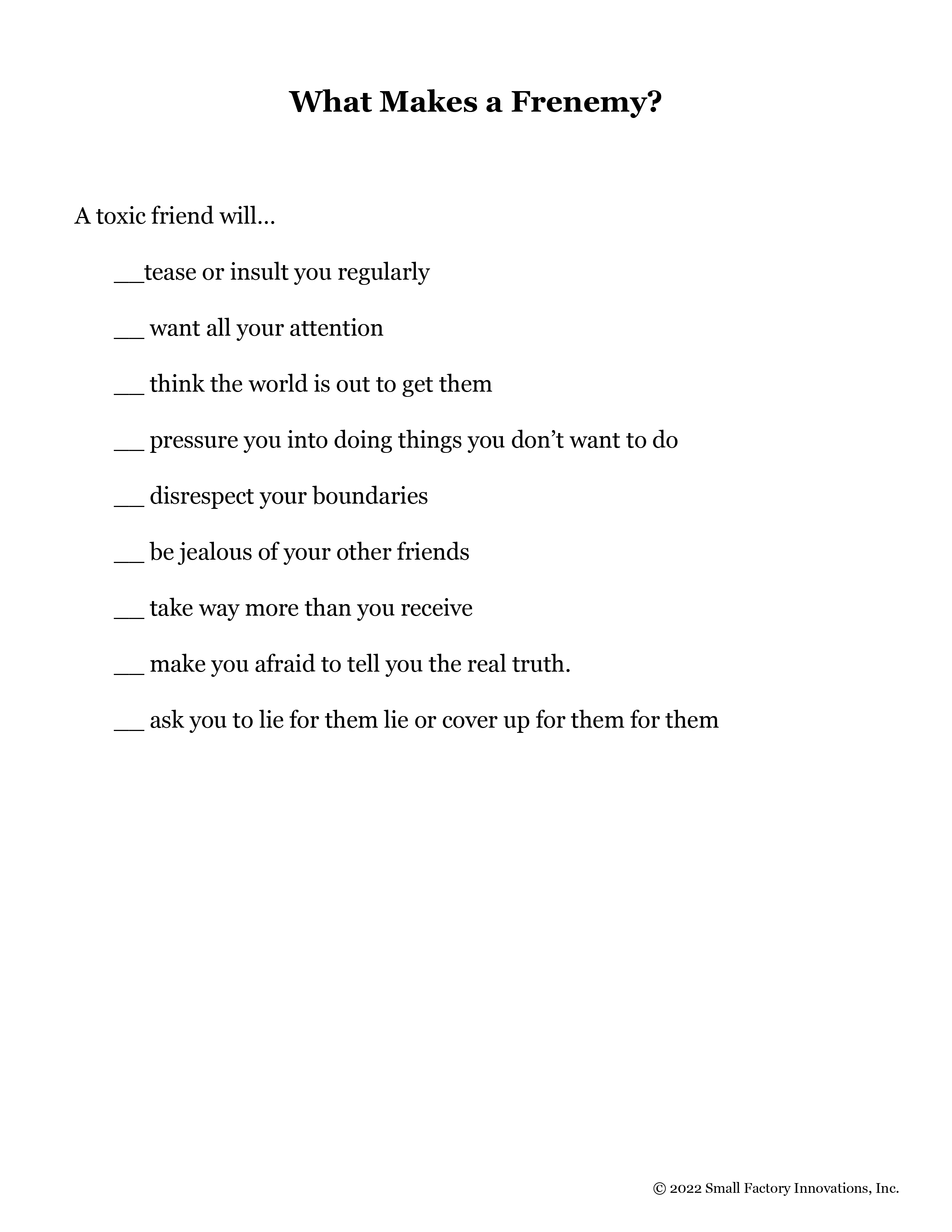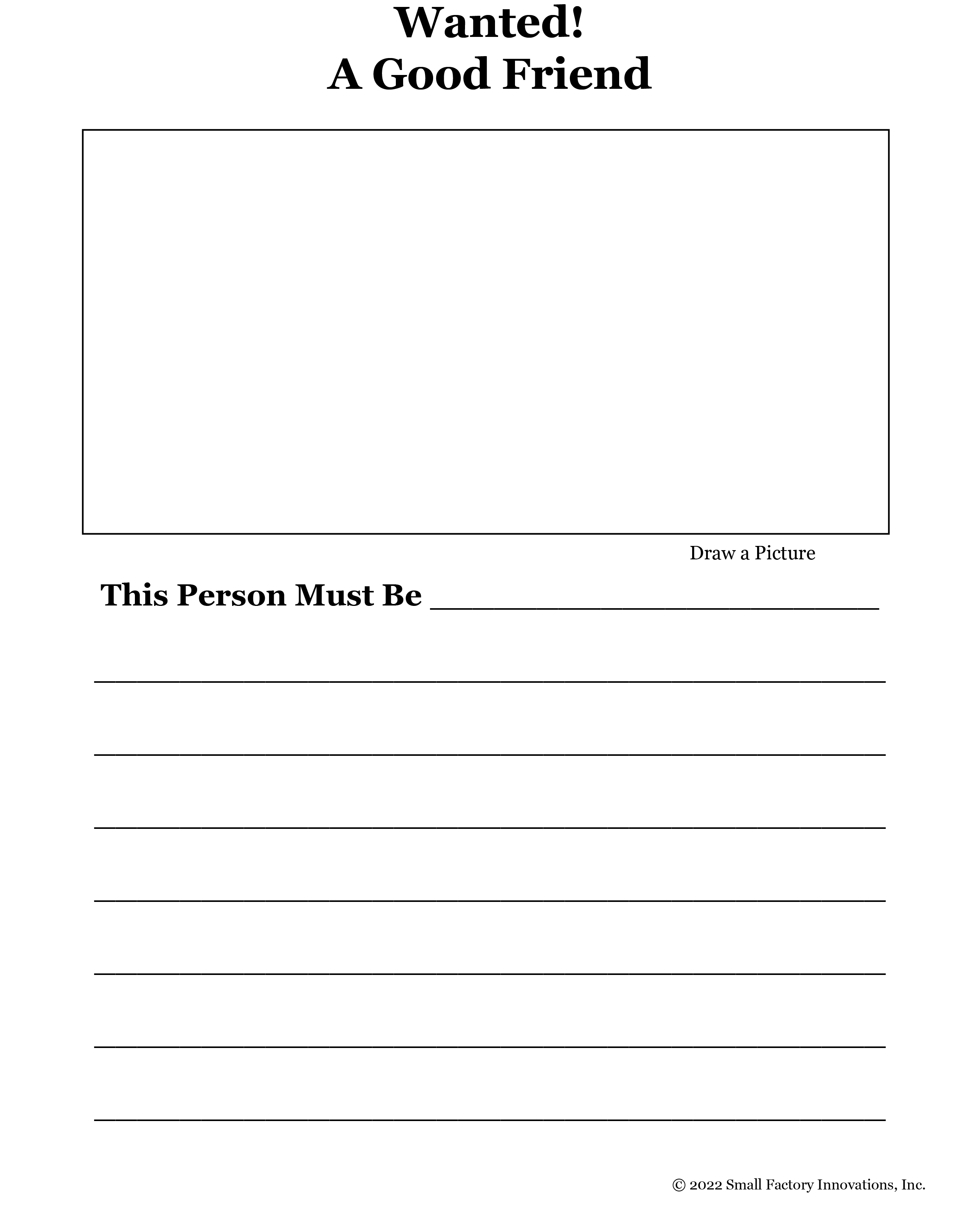
Improve life outcomes
Jumpstart: Friend or Frenemy - Universal
Foundational
CASEL Competency Focus: Self Management
Time: 20-30 minutes
Materials: Writing Utensils, Worksheet
Objectives:
1. Identify traits of a healthy friendship.
2. Identify 3 characteristics of an unhealthy or toxic friendship.
3. Use decision making strategies to come up with a resolution.
4. Communicate feelings with peers through a conversation or letter.
Speaking and Listening
Language Writing
Definitions of Key Terms:
- Toxic Relationships: A toxic relationship is one that makes you feel unsupported, misunderstood, demeaned, or attacked. It’s a relationship that makes you feel worse rather than better.
- Loyal: Having or showing true and constant support for someone or something.
- Manipulation: Strategies and behaviors a person uses to gain power or influence over another. These tactics often include attempts to damage another person's emotional and mental well-being.
- Frenemy: A person who pretends to be a friend but who is also in some way an enemy or rival.
Lesson Procedures
Introduction: Begin by brainstorming the qualities of a healthy friendship and write answers on the board. Hand out the checklist, “What Makes a Good Friend?” and complete the list on the board. Ask the students to think of their very best friend and check off the items on the worksheet below.
Think! Do you have a friendship with a person who does not have the qualities on the checklist? Is there a friend in your life who teases and manipulates you or makes you feel bad about yourself? If you don’t count yourself lucky, but pay attention, you may need this knowledge later. Hand out the checklist, “What Makes a Frenemy? Ask the students to think of anyone that fits into the list and check off corresponding items.
What Now? You have choices. You can stay friends and feel anxious, question your worth, and allow yourself to get into trouble with him/her, or you can be honest and tell them how you feel. This is where your responsible decision skills are needed!
Identify Your Goal This means identifying the reason for needing to make a decision and what problems need to be solved (e.g., My friend likes to do dangerous things and I don’t want to get in trouble. My friend makes fun of my height and it really makes me angry. My friend talks badly behind my back and it hurts my feelings.)
Gather Information When making good decisions it is best to gather necessary information that is directly related to the problem. Doing this will help you understand what needs to be done in solving the problem. It will also help to generate ideas for a possible solution (e.g., Talk to a trusted friend or relative about how you feel. List the things that you like or dislike about him/her. Write down how you feel when you’re around him/her.).
Consider the Consequences This step can be just as important as step one because it will help you determine how your final decision will affect you and others involved. In this step, you will be asking yourself what is likely to be the results of your decision. How will it affect you now? And how will it affect your future? Review the pros and cons of the different options that you listed in the last step (e.g., He/She may react by yelling, crying, walking away. He/She may be mad at you and talk badly about you. He/She may be sorry for his/her actions/behavior and apologize.).
Make Your Decision Now that you have identified your goal, gathered all necessary information, and weighed the consequences, it is time to make a choice and actually put in place your final decision. Understanding that this step can cause some people a lot of anxiety is important because this is where you have to trust your instincts. You can write notes for yourself so you don’t forget anything and have a conversation in person, or you can write them a letter.
Evaluate Your Decision Once you have made your final decision and put it into action, it is necessary to evaluate the decision and the steps you have taken to see that it works. This will take time to see what happens. This final step is probably just as important as step one, if not more important, because it will help you to further develop your decision making skills for future problems. Ask yourself if you feel better or worse. Has he/she changed? How has this decision affected my life?
Suggested Read: Just Kidding, by Trudy Ludwig
Role Play: Here are some examples of situations that you might need to address with a peer. Pair up and write a script for the situation that you choose and take turns acting it out.
- Your peer makes fun of you in front of other people
- Your peer took something that belongs to you
- Your peer was mean to your other friend
- You peer borrows from you but returns everything broken
Application: Write a letter to an imaginary frenemy who steals people’s things when you are together. Share your letter with the class. Try it out!: Write a wanted ad looking for a good friend. Add your interests and must haves.


